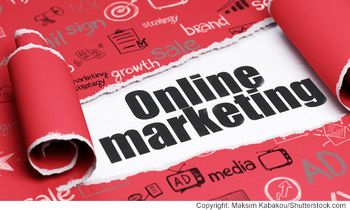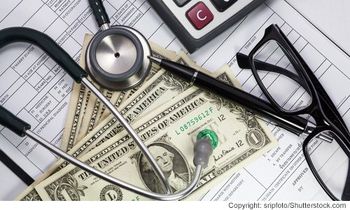
3 Traditional Ad Formats That Still Matter for Practices
By: John Sung Kim Digital medical practice marketing has been growing in recent years, but there are traditional ad formats still matter. Here are three that are valuable.
By:
There’s a saying that’s been going on since the mid-90s that, “Everything is going digital.” And while that certainly seems true in a world where smartphones are ubiquitous, it appears that digital media has actually broadened the overall universe of content that’s consumed by the public.
Take for example the publishing industry. Just five years ago, many analysts predicted gloom and doom for the printed book, especially on the heels of a leading national bookseller filing for bankruptcy. However, the consumption of both printed books and digital books have risen since that time. What’s more interesting still is that the local bookstore (whose death had been foretold by numerous experts and pundits) is actually on the rise as well.
To be fair, there are certain forms of print media that are no longer relevant for independent practices and their patients. The Yellow Pages or Diamond Certified Businesses come to mind. Unfortunately for these organizations, Google and Yelp have destroyed their businesses in both relevance and readership.
Let’s look at the top three traditional media or advertising formats that do still have a return on investment (ROI) for independent practices and how to best implement and measure them in your practice.
The Sign and Logo
Not all practices have what marketers call “signage,” but for those practices that do, investing in a well done, well placed sign pays for itself within months. That’s because contrary to logic, logos and signs do affect consumer buying decisions.
Twitter spent $15 on its logo and Nike spent $35 creating the swoosh, so logos and signs don’t have to be expensive marketing agency endeavors. There are
Once your new logo has been designed, you can go to companies like FastSigns for low-cost, fast turnaround physical signs. For new patients, the sign is the first physical thing (and impression) they see of your practice.
For those that do not have physical space for a sign and have just a website, designing a logo is equally as important. Western readers read website pages in what’s referred to as a “Reverse S,” and that means the upper left hand corner of your website (where logos most often are placed) is the first online impression they get of your practice.
Radio
I’ve been suggesting to independent practices for the better part of eight years to expand their digital footprint, and each year I’ve predicted that radio ads would fall off my client’s radar. In fact, one of the most effective things I’ve done for my doctors is to install a Local DID to track the efficacy of their radio advertisements.
What’s a Local DID you ask? Companies like Halloo and RingCentral offer low cost ($5 to $10 per month) local phone numbers that any small business can rent, and then set up to forward to an existing phone line.
For example, a dermatology practice with three locations in Florida asked for my help cleaning up their nonperforming ad campaigns. So, I rented multiple Local DID numbers and placed a unique number on each radio advertisement. All the Local DID numbers forwarded to their respective office location’s traditional land lines, but I was able to easily see online which radio ads were producing phone calls and which ones they were actually losing money on.
After just four weeks of measurement, it became clear to me that morning radio talk shows on Hispanic stations had tremendous ROI, while the other stations performed poorly. We divested ourselves of the underperforming stations and times, and we invested the rest into the stations and times that were working, increasing the practice’s ROI on radio over 250 percent. And, all at the cost of $30 per month for six Local DIDs plus my fees.
Even without paying my fees, you can see that radio can have a positive impact on ringing your phones as well as bringing traffic to your website, but it must be measured with a Local DID.
Coupons and Groupons
Everyone loves a deal. In a
Perhaps most interesting is that 91 percent of the respondents said that they would buy those products again. This might explain the popularity of Groupon and Living Social (mass coupon sites where consumers buy, then print coupons at home) and why small business owners are willing to offer consumers 50 percent discounts on such sites.
For example, let’s look at a former client of mine in San Francisco who was one of the first medical practices in the city to use Groupon. By offering a coupon of 50 percent off for an elective procedure that normally generated $650, the doctor was losing approximately $325 in total revenue potential. However, I felt that this was a promising investment considering that it was costing this practice well over $600 in marketing spend to acquire a new patient.
If just half of the new patients acquired from Groupon came back to revisit the practice, this coupon methodology was far more effective than Yellow Pages, outdoor signs, and even Google Adwords.
This practice now does about four Groupons per year, or one every quarter, netting approximately $250,000 in additional annual revenues. While this method is a hybrid of web and physical paper, in essence, coupons still work.
Of course it’s true that media and consumer behavior is changing, yet as the digital footprint of advertising seems to ever expand into our lives, traditional media formats such as signs, radio, and coupons still matter. In fact, because they are becoming more of a hybrid component of many digital ad campaigns, it could be argued that in an online and mobile world, these traditional forms of advertising are more relevant than ever.
Newsletter
Optimize your practice with the Physicians Practice newsletter, offering management pearls, leadership tips, and business strategies tailored for practice administrators and physicians of any specialty.








